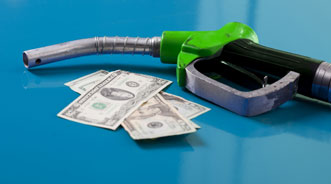ALG Looks at Residual Impact of $1 Increase in Fuel Price

By subscribing, you agree to receive communications from Auto Remarketing and our partners in accordance with our Privacy Policy. We may share your information with select partners and sponsors who may contact you about their products and services. You may unsubscribe at any time.
SANTA BARBARA, Calif. –
Although gas prices have moderated in recent weeks, there’s no telling what may set off a fuel-price hike down the road. And recent times have shown that price movements certainly impact the auto industry.
To shed some light in this area, ALG recently investigated what residual impact a $1-per-gallon increase in fuel costs would trigger and determined that some vehicle segments would see significant residual value movement.
Its proprietary model is designed to calculate the impact on 36-month resale/residual values for individual segments when the gas price changes $1.
Showing the most positive impact was the entry compact (up 10 percent) and mid-compact segments (up 9 percent), while premium full-size SUVs (down 13 percent), ALG indicated.
“Unsurprisingly, entry compacts and mid-compacts have the largest positive impact to 36-month resale/residual values when gas prices increase,” officials noted.
Looking at some other segments, they added: “Convertible, premium convertible and sporty vehicles are less impacted by gas prices, as they are not typically daily drivers. Often, these are the second or even third vehicle within a household and are driven more for pleasure than daily use.”
Subscribe to Auto Remarketing to stay informed and stay ahead.
By subscribing, you agree to receive communications from Auto Remarketing and our partners in accordance with our Privacy Policy. We may share your information with select partners and sponsors who may contact you about their products and services. You may unsubscribe at any time.
More specifically, it was determined that the convertibles would show a 2-percent residual hike from a $1/gallon gas price increase, with premium convertibles going down 2 percent and sporty vehicles increasing 1 percent.
Likewise, gas-price changes don’t impact the full-size segment (flat), CUV (down 2 percent) and minivan (down 2 percent) very much, either.
“These segments have performed well in spite of volatility in gas prices due to their functionality as people-movers,” ALG said of those three segments.
Officials also noted that CUV popularity has chipped away some of the demand for full-size vehicles and minivans, which had typically been the go-to segments for families.
ALG offered the following chart to demonstrate the impact of the gas-price hike:

How Gas Prices Impact Auction Values
Next up, ALG took a look how auctions values are affected by the gas price forecast. The firm offered data illustrating how gas prices and auction values of three-year-old units have typically been correlated.
This forecasts what auction prices will be in future years, considering the projections ALG has for gas prices.
Assuming all other elements remain steady, the three-year-old Auction Data Index is expected to fall modestly from the 2010 level and stabilize for the next few years.
ALG’s data shows no real movement in the Auction Data Index from 2011 through 2015.
“However, as gas prices are forecasted to increase from 2010 through 2015, ALG expects that resale/residual values will continue to improve for fuel efficient segments, while demand for SUVs will decline from current levels,” the company noted.
The following is a chart sharing how auction prices may be affected:

Glimpse of September/October Edition
Moving along, ALG also offered a peak at what it anticipates its September/October 2011 edition will look like. There will likely be “some negative seasonality,” officials noted.
“Normal declines will be roughly 1.3 (percentage points) on average with varying degrees for particular segments due to differing depreciation rates,” the company explained. “Based on the latest housing data, ALG may make revisions to its housing market outlook.
“ALG is closely monitoring the consensus of forecasting sources and economic information relating to the gas and oil market, housing recovery and labor market, and is likely to make changes concerning the strength of the economic recovery in future editions,” officials added.
Citing the “soft patches” in the economy found by some experts, ALG stressed that it is being mindful of short-term trends and the longer-term consensus forecasts.


